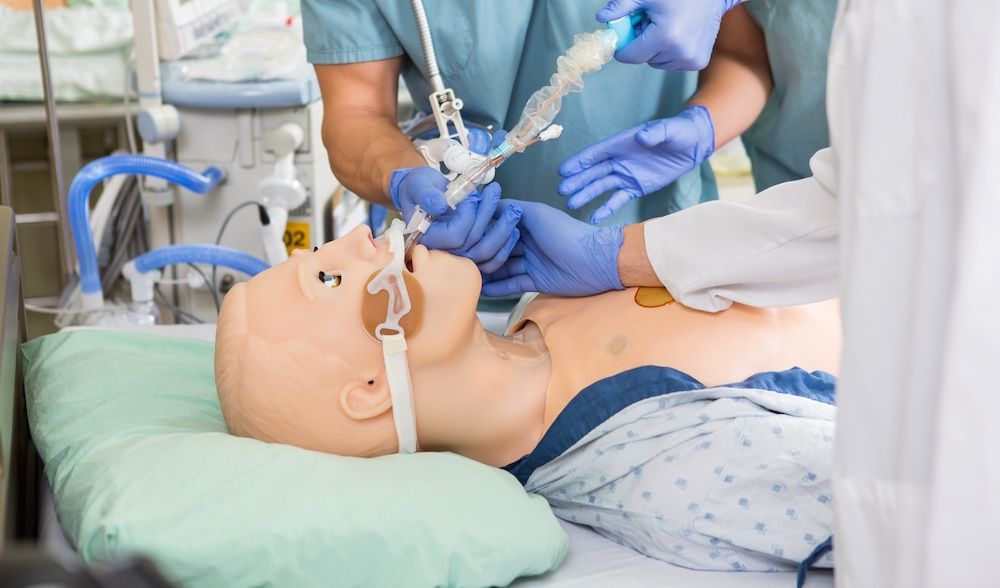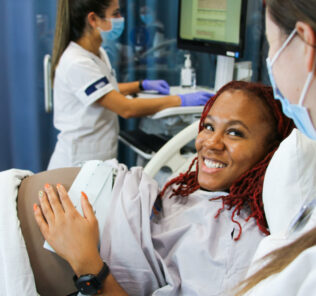Key Considerations for High Fidelity Healthcare Simulation
To master a high level of fidelity in healthcare simulation, there is a delicate balance of factors to consider. Healthcare simulationists must balance technical mastery and instructional finesse by all personnel involved to achieve high fidelity. What are the most important considerations for designing high-fidelity medical simulation experiences with consistent quality at scale? This article by Erin Carn-Bennett, MSN, RN, will explore factors to consider as a faculty member to deliver a high fidelity clinical simulation scenario.
Scenario Design for High Fidelity Experiences
The cornerstone of effective high fidelity healthcare simulation lies in the thoughtful design of lifelike scenarios that mimic real-world medical challenges. There are many considerations required when in the process of selecting a high fidelity clinical simulation scenario. A real case may be used as a base for the scenario, but assurance of confidentiality of patient details must be maintained. Depending on individual organization policy, patient consent may also be required.
Sponsored Content:
If a real patient case is used as a base for a healthcare simulation scenario, ensure that appropriate time has passed to not re-traumatize staff. Depending on the case and the events that surround the care, there may need to be years since the original case or the scenario may need to be utilized in a different clinical area or organization.
However, if the scenario is being built from the start, ensure the case is peer-reviewed. The inclusion of multiple colleagues from different specialties in the peer review process ensures different perspectives are explored. Interprofessional and intraprofessional inclusion allows the learners to experience higher levels of realism in the clinical simulation.
Appropriate Simulated Technology Selection
Selection of the right clinical simulation technology is important to replicate clinical situations authentically and to create an immersive environment for healthcare simulation participants. This includes considerations of what manikin will be used within the healthcare simulation scenario and what fidelity the manikin can provide. Dependant on the scenario and the educational objectives prioritized, certain fidelity of some manikins may need to be sacrificed.
Sponsored Content:
To enhance fidelity in healthcare simulation, the engagement of multiple senses, when feasible, will assist to create a deep learning experience that resonates with clinical simulation participants. This may include elements such as moulage to manikins or standardized/simulated patients (SPs), smell in the clinical simulation room, noises from the patient and environment in the scenario, and tactile experiences of objects for participants to touch that are relevant to the healthcare simulation scenario. High fidelity hybrid simulation which is a combination of both SPs and immersive manikin technology can create one of the closest to patient care experiences for clinical simulation participants. There should be a careful balance of these elements to not distract clinical simulation participants but to provide fidelity and realism to the patient within the scenario.
Psychological Immersion is Key
Beyond physical fidelity, the psychological dimensions of clinical simulation play a key role in the emotional engagement of participants to make decisions as they would in actual clinical environments. High fidelity clinical simulation assists participants with the ability to psychologically invest in the scenario. However, other factors will assist in the psychological immersion of participants into a high fidelity simulation.
The psychological safety of clinical simulation participants is incredibly important for participants to be able to suspend disbelief and engage in the high fidelity simulation as if the manikin or SP is an actual patient. The likeliness of this can be increased with some simple steps. Ensure adequate space in the schedule for a prolonged introduction or pre-brief phase so that participants have time to adjust to the environment and relax a bit. Also, make sure that there is adequate time to introduce participants to the high fidelity manikin so that participants are able to become familiar with the available features.
Simulated Patients Add Additional Realism
Incorporation of SPs adds a lot more fidelity to clinical simulations. Standardized patients elevate the authenticity of soft skills such as human to human interactions; however, the SPs may provide challenges in the creation of realism during the assessment of the SPs in the scenario. If new to the use of SPs, then use the resources available to overcome such issues and increase fidelity. The Association of Standardized Patient Educators (ASPE) has Standards of Best Practice regarding the use of SPs. Take time to consider the balance of the use of SPs and a manikin.
Debrief for Meaningful Impact
Skillful debriefing of clinical simulation is the vessel to assist in the translation of the clinical simulation experience into practical applications. The offer of a safe space for reflection, analysis, and consideration for improvement enables participants to go forth and translate new knowledge into improved patient care at the bedside. Be strategic in the process of choice of debriefers for a high fidelity simulation. Allow new debriefers opportunities and ensure experienced debriefers will support them. A balance is required to allow less experienced debriefers the opportunity to debrief a high fidelity clinical simulation but also psychological safety of participants to be consistently maintained.
Interdisciplinary Dynamic Balance
High fidelity healthcare simulation provides a unique opportunity to replicate everyday interdisciplinary teams and allow the time to practice together as a team. The opportunity that high fidelity clinical simulation offers is the debrief, where truly deep learning occurs. In high fidelity simulation, ensure that the number of team members that would normally respond in real life and their variation in experience levels are replicated.
In the pursuit of high fidelity, ensure that participant safety remains the paramount concern. Meticulous plans and risk mitigation strategies should be utilized to ensure that the correct balance of interdisciplinary dynamics is captured in the clinical simulation. The debrief of the interdisciplinary team after a high fidelity simulation will allow team members to understand others’ points of view and remove assumptions as to why team members have behaved in a particular manner.
View the HealthySimulation.com LEARN CE/CME Platform Webinar High Reality vs. High Fidelity: What’s the Difference When it Comes to Clinical Simulators? to learn more!
Technical Challenges Must Be Overcome
High fidelity simulation implementation often includes technical hurdles regardless of how much preparation is undertaken. Make a contingency plan and allow experienced simulation technicians to support as much as possible. Realism is incredibly important to the clinical simulation participants in high fidelity simulation. High fidelity will enable participants to suspend disbelief more easily and engage in the clinical simulation. A highly effective clinical simulation technician is essential to ensure that a high level of fidelity is maintained.
As technology and pedagogical approaches evolve, exploration of the potential of artificial intelligence, virtual reality, and gamification opens new horizons for healthcare education. Within high fidelity clinical simulations, augmented reality to enhance fidelity is still finding its place not to distract or take over the clinical simulation. To find this balance is a challenge to many in the healthcare simulation space and is one to follow with interest.
Encouragement of participants to approach high fidelity simulations with a curious and inquisitive mindset can create deeper engagement and instill critical thinking skills. The creation of a community for faculty members, either online or in person, to exchange clinical simulation insights can accelerate the advancement of clinical simulation programs. This article has explored the power of high fidelity simulation and given readers some points of consideration when a member of the faculty for a high fidelity clinical simulation.
Learn More About High Fidelity Simulation!
Erin Carn-Bennett is a Simulation Nurse Educator for the Douglas Starship Simulation Programme in Auckland, New Zealand. Carn-Bennett has her Masters of Nursing and has an extensive nursing career within pediatric emergency and also nursing management. She is passionate about debriefing and all things simulation. Carn-Bennett is a member of the IPSS board of directors. Carn-Bennett is the lead host of the podcast Sim Nurse NZ.
Sponsored Content:


















